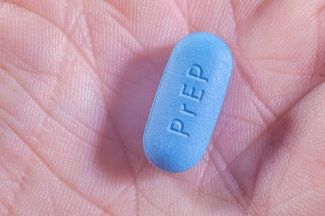Can Those Who Have HCV Benefit from PrEP?
Investigators looked to see if this population might be candidates for this form of HIV prevention.

For some people with hepatitis C (HCV), lifestyle factors could put them at risk for HIV infection.
Investigators from Harvard, University of Maryland, HIPS, and NIH decided to assess the potential of utilizing PrEP among individuals with HCV and associations with PrEP awareness, access, and interest.
Their subsequent work was developed into a poster presented at the 2022 Annual Conference on Retroviruses and Opportunistic Infection (CROI).
They had 500 enrolled participants from multiple sites in Washington DC and Baltimore, including Federally Qualified Health Centers (FQHCs), drug treatment centers, and community organizations.
Interventions for the study included the collection of epidemiologic information and plasma samples from participants with HCV and/or HIV. With the study looking to focus on HCV mono-infected patients, they end up with 314 potential candidates.
According to the investigators, the candidates were indicated for PrEP with one of the following criteria: injection drug use within 12 months and sharing injecting equipment; vaginal or anal sex without barrier protection within 12 months and 2 or more partners; engaged in transactional sex, or had a HIV+ sexual partner.
Of the 314 participants, only 27% were aware of PrEP, only 10% had been offered PrEP, and only 2% were taking this form of HIV prevention.
“Though indications for PrEP were prevalent among individuals with HCV in this cohort, most patients were unaware of PrEP, had never been offered PrEP, and were not using PrEP,” the investigators wrote. “The significant association between study site and both PrEP awareness and provider offerings of PrEP suggest high variability in PrEP access by location of healthcare utilization.”
In conclusion, they said this study demonstrated, "the need for improved PrEP implementation among people with HCV at risk for HIV acquisition.”
The CROI study was titled, “PrEP Indications and PrEP Knowledge, Access, and Interest Among Individuals with HCV.”
